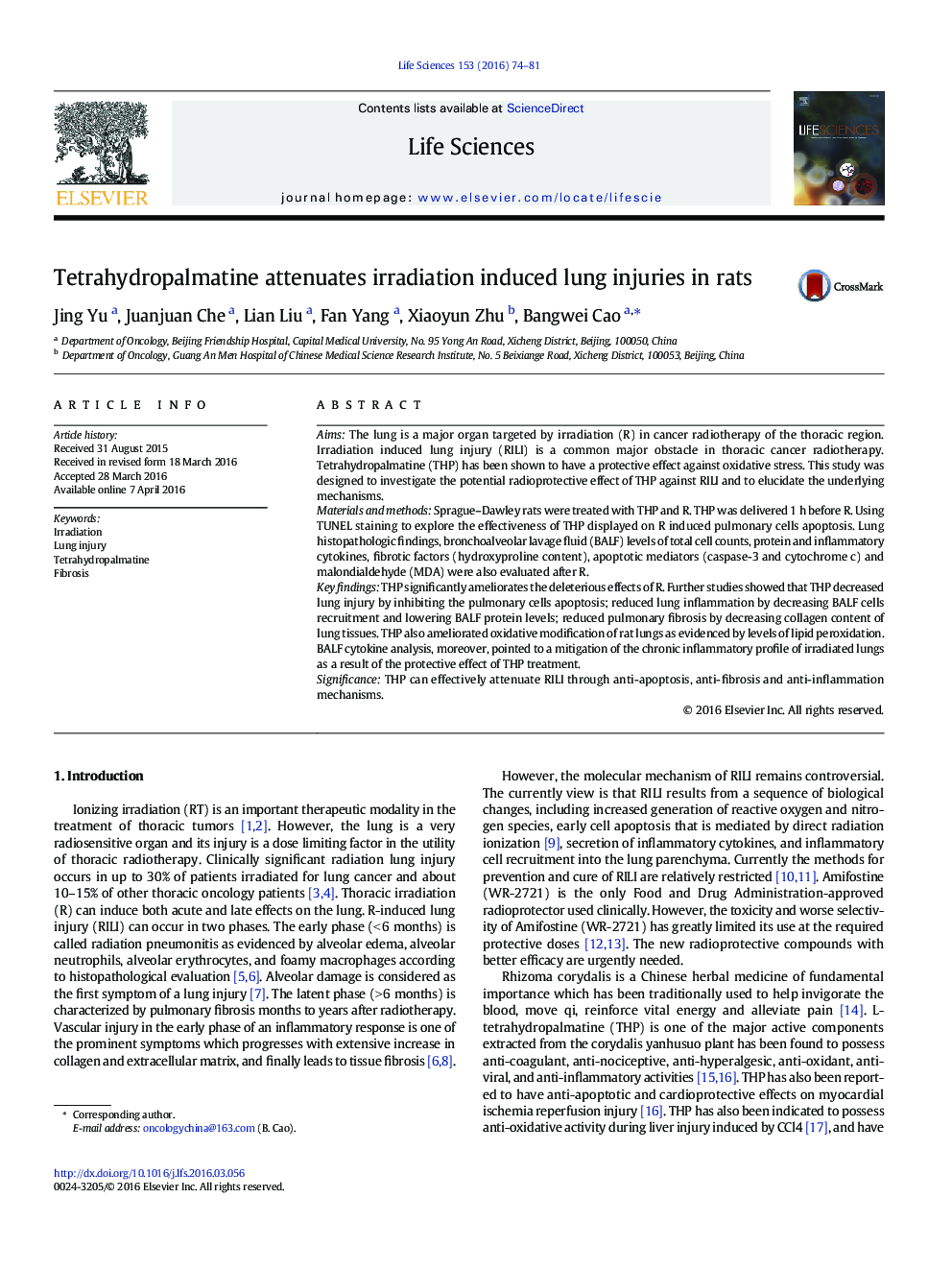| Article ID | Journal | Published Year | Pages | File Type |
|---|---|---|---|---|
| 2550558 | Life Sciences | 2016 | 8 Pages |
AimsThe lung is a major organ targeted by irradiation (R) in cancer radiotherapy of the thoracic region. Irradiation induced lung injury (RILI) is a common major obstacle in thoracic cancer radiotherapy. Tetrahydropalmatine (THP) has been shown to have a protective effect against oxidative stress. This study was designed to investigate the potential radioprotective effect of THP against RILI and to elucidate the underlying mechanisms.Materials and methodsSprague–Dawley rats were treated with THP and R. THP was delivered 1 h before R. Using TUNEL staining to explore the effectiveness of THP displayed on R induced pulmonary cells apoptosis. Lung histopathologic findings, bronchoalveolar lavage fluid (BALF) levels of total cell counts, protein and inflammatory cytokines, fibrotic factors (hydroxyproline content), apoptotic mediators (caspase-3 and cytochrome c) and malondialdehyde (MDA) were also evaluated after R.Key findingsTHP significantly ameliorates the deleterious effects of R. Further studies showed that THP decreased lung injury by inhibiting the pulmonary cells apoptosis; reduced lung inflammation by decreasing BALF cells recruitment and lowering BALF protein levels; reduced pulmonary fibrosis by decreasing collagen content of lung tissues. THP also ameliorated oxidative modification of rat lungs as evidenced by levels of lipid peroxidation. BALF cytokine analysis, moreover, pointed to a mitigation of the chronic inflammatory profile of irradiated lungs as a result of the protective effect of THP treatment.SignificanceTHP can effectively attenuate RILI through anti-apoptosis, anti-fibrosis and anti-inflammation mechanisms.
